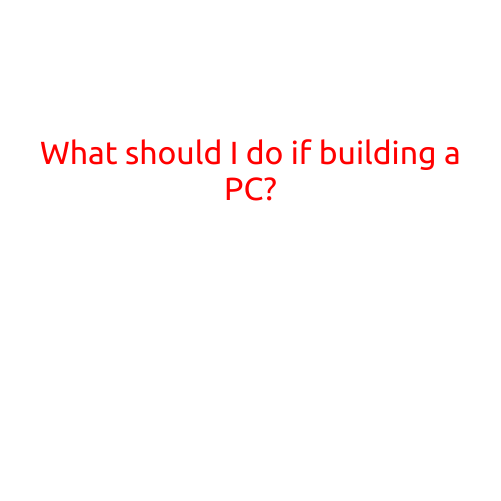
What Should I Do If My Computer Hardware Fails?
As technology continues to advance, our reliance on computer hardware has become increasingly crucial to our daily lives. With so many aspects of our lives now dependent on our devices, it’s not uncommon for them to occasionally malfunction or fail. When this happens, it can be stressful and frustrating, especially if you’re in the middle of an important task or deadline.
In this article, we’ll explore common causes of computer hardware failure, as well as steps you can take to troubleshoot and potentially fix the issue.
Common Causes of Computer Hardware Failure
Before we dive into the fixes, it’s essential to understand the most common causes of computer hardware failure. Some of the most common causes include:
- Physical damage: Dropping your device, spilling liquid on it, or exposing it to extreme temperatures can cause damage to internal components.
- Wear and tear: As your device ages, internal components can wear out, leading to failure.
- Outdated drivers: Failing to update drivers for your hardware can cause compatibility issues.
- Malware and viruses: Malicious software can corrupt your device’s operating system or data.
Troubleshooting and Fixing Computer Hardware Issues
If you’re experiencing computer hardware issues, the first step is to troubleshoot the problem. Follow these steps:
- Restart your device: Sometimes, a simple reboot can resolve the issue.
- Check for loose connections: Verify that all internal components, such as RAM or graphics cards, are securely connected.
- Run a virus scan: Malware and viruses can cause system crashes and hardware failure.
- Update drivers: Make sure all your hardware drivers are updated to the latest versions.
- Check for overheating: Make sure your device is not overheating, which can cause hardware failure.
If your troubleshoot marks the problem, you may need to take further action:
- Contact a professional: If you’re not comfortable fixing the issue yourself, consider contacting a professional technician.
- Replace the faulty component: If the issue is with a specific component, such as a hard drive or RAM, you may need to replace it.
- Back up your data: If your device is beyond repair, be sure to back up any important files or data.
Preventative Measures
To minimize the risk of computer hardware failure, consider the following preventative measures:
- Regularly update your operating system and software: Keeping your device’s operating system and software up to date can help prevent compatibility issues.
- Use antivirus software: Regularly scans and updates can help prevent malware and viruses.
- Handle your device with care: Avoid exposing your device to extreme temperatures, water, or physical harm.
- Use a surge protector: Protect your device from power surges and spikes.
Conclusion
Computer hardware failure can be frustrating and stressful, but by understanding common causes and taking steps to troubleshoot and fix issues, you can minimize downtime and keep your device running smoothly. Remember to stay proactive with preventative measures and keep your device up to date to reduce the risk of hardware failure.





